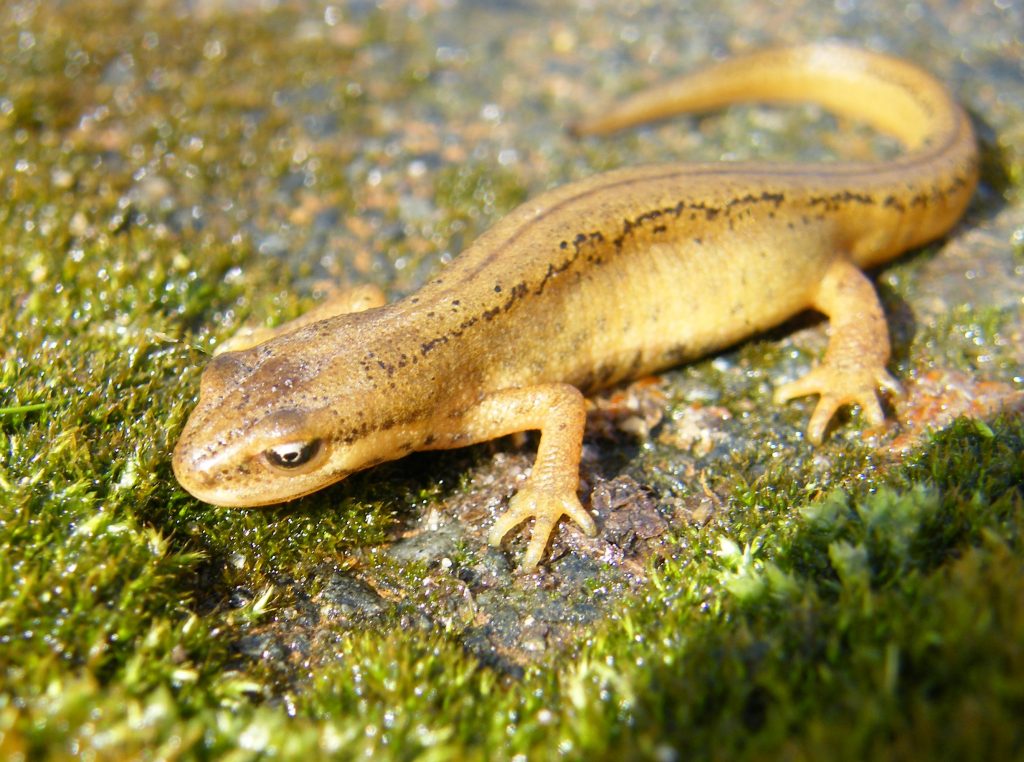Common newts can be found in a variety of habitats outside the breeding season, inhabiting deciduous woodland, wet heathland, bogs, marshes, gardens, parks and farmland. They prefer standing water with plenty of weeds, such as lake margins, ponds and ditches, in which to breed.
Common newts feed upon insects, caterpillars, worms and slugs which is their main diet on land, while in the water, insects, crustaceans, mollusks and tadpoles are eaten. Newts do not use their tongues to catch their prey in the water, instead, they have tiny teeth which they use to grab onto their prey. Newts tend to hunt for their prey near the surface of the water.

During courtship the male newt ‘displays’ for his prospective mate by vibrating his tail in front of the female and waft glandular secretions towards her by fanning his tail in her direction. This stimulates the female to approach him.
The male then deposits a sperm-containing capsule, known as a spermatophore, in front of his mate, who manoeuvres herself into a position whereby she can pick up the capsule with her cloaca – fertilization occurring inside the female. After a few days, the female begins to lay eggs individually, usually under aquatic plant leaves at a rate of 7 to 12 eggs per day. Altogether a total of 400 eggs may be produced over the season.















